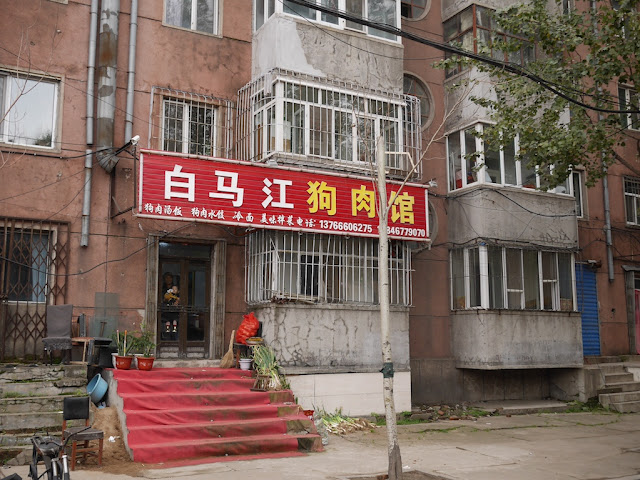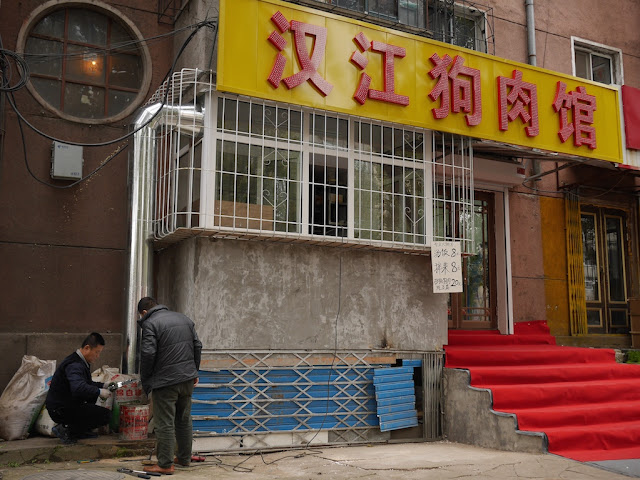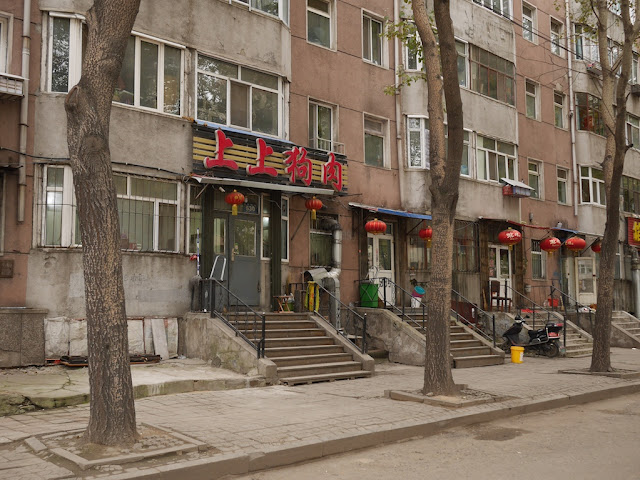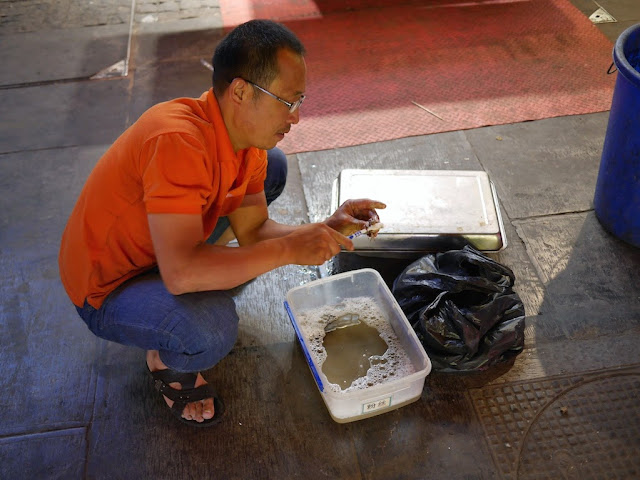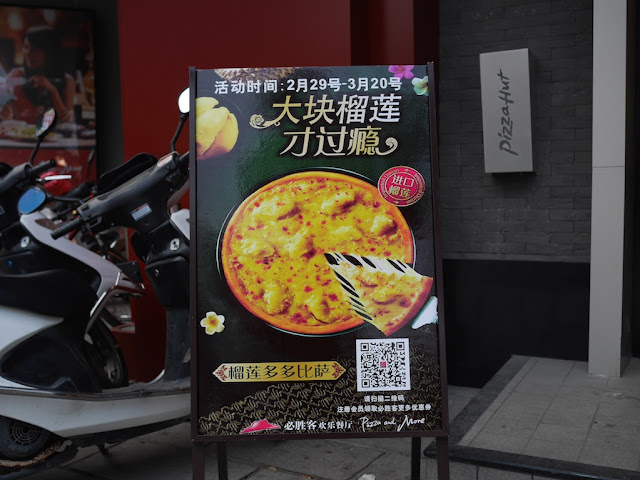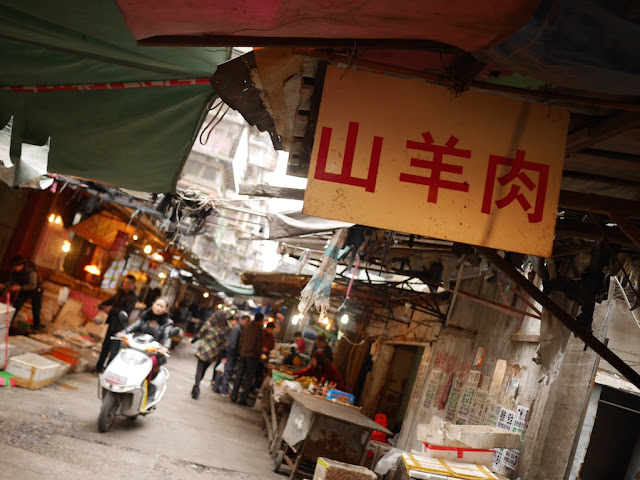Today is the last day for the Golden Week celebrating the founding of the People's Republic of China. Since Chinese flags have been a persistent theme here during the past week or so (for example here, here, and here), it seems fitting to share some more Chinese flags I saw today, these prominently on display at a restaurant in Mudanjiang.
For those who can read Chinese, one other thing is immediately obvious about the above restaurant on West Ping'an Street: their special dish. The Chinese characters "狗肉" in its name mean "dog meat". Restaurants featuring dog meat are easy to find in Mundanjiang. In fact, within sight of the restaurant is another which features "dog meat" in its name.
And further west along West Ping'an Street is another restaurant with "dog meat" in its name . . .
And another . . .
And another . . .
And another . . .
And another . . .
Notably, none of these other dog meat restaurants had Chinese flags outside. Also of note, some of their names reference rivers in or bordering the Korean Peninsula. Although Mudanjiang is closer to Russia, North Korea isn't very far away.
I didn't look at every sign along the street, so there could be more along this section of road about one kilometer long. My sense was that this area has a higher density of restaurants featuring dog meat than other parts of Mudanjiang, but, again, this is not something I have been rigorously paying attention to.
I really hadn't planned posting about dog meat today, so I will save more on the topic for another day. I'll now return to Chinese flags to end this post. Of course I saw more of them today. One was on display at restaurant in the Mudanjiang Wanda Plaza.
This restaurant features another kind of meat — crabs, presumably of the patriotic variety. The humanoid crab on the right appears to be holding an iPhone though.
And I believe that is the end to this year's series of National Day posts.
For those who can read Chinese, one other thing is immediately obvious about the above restaurant on West Ping'an Street: their special dish. The Chinese characters "狗肉" in its name mean "dog meat". Restaurants featuring dog meat are easy to find in Mundanjiang. In fact, within sight of the restaurant is another which features "dog meat" in its name.
And further west along West Ping'an Street is another restaurant with "dog meat" in its name . . .
And another . . .
And another . . .
And another . . .
And another . . .
Notably, none of these other dog meat restaurants had Chinese flags outside. Also of note, some of their names reference rivers in or bordering the Korean Peninsula. Although Mudanjiang is closer to Russia, North Korea isn't very far away.
I didn't look at every sign along the street, so there could be more along this section of road about one kilometer long. My sense was that this area has a higher density of restaurants featuring dog meat than other parts of Mudanjiang, but, again, this is not something I have been rigorously paying attention to.
I really hadn't planned posting about dog meat today, so I will save more on the topic for another day. I'll now return to Chinese flags to end this post. Of course I saw more of them today. One was on display at restaurant in the Mudanjiang Wanda Plaza.
This restaurant features another kind of meat — crabs, presumably of the patriotic variety. The humanoid crab on the right appears to be holding an iPhone though.
And I believe that is the end to this year's series of National Day posts.



